
Mystical Majesty of the Scottish Highlands
Discover the mystical beauty, rich history, and vibrant culture of the Scottish Highlands, a captivating region of rugged mountains, deep lochs, and ancient castles.
The Scottish Highlands, located in the northern part of Scotland, are an enchanting destination that beckons travelers with its dramatic landscapes, rich history, and vibrant culture. This region is renowned for its stunning natural beauty, featuring rugged mountains, deep lochs, and misty glens. As you traverse the winding roads, you will be greeted by breathtaking vistas that have inspired poets and painters for centuries. The Highlands are steeped in history, with ancient castles, battlefields, and standing stones that tell tales of clans and kings. The Highlands offer a diverse range of activities for outdoor enthusiasts. Hikers can explore the many trails that wind through the mountains, offering views that are both awe-inspiring and serene. Ben Nevis, the highest peak in the UK, is a must-visit for those seeking a challenging climb. For those who prefer a more leisurely pace, scenic drives through the glens and along the coast provide ample opportunities for photography and wildlife spotting. The region is home to red deer, golden eagles, and even the elusive Scottish wildcat. Beyond its natural attractions, the Scottish Highlands are rich in cultural experiences. Visit the bustling town of Inverness, often considered the capital of the Highlands, to explore its historic sites and vibrant arts scene. Delve into the region's whisky heritage by touring one of the many distilleries that produce the world-famous Scotch whisky. Engage with the local Gaelic culture through music, dance, and storytelling, which are integral parts of Highland life. Whether you are a history buff, nature lover, or cultural enthusiast, the Scottish Highlands promise an unforgettable journey.
Local tips in Scottish Highlands
- Pack layers and waterproof clothing, as the weather in the Highlands can change rapidly.
- Renting a car is the best way to explore the remote and scenic areas at your own pace.
- Visit in late spring or early autumn to avoid the summer crowds and enjoy milder weather.
- Try traditional Scottish dishes like haggis, neeps, and tatties at local pubs and restaurants.
- Book accommodations in advance, especially during peak travel seasons, to secure the best options.
Mystical Majesty of the Scottish Highlands
The Scottish Highlands, located in the northern part of Scotland, are an enchanting destination that beckons travelers with its dramatic landscapes, rich history, and vibrant culture. This region is renowned for its stunning natural beauty, featuring rugged mountains, deep lochs, and misty glens. As you traverse the winding roads, you will be greeted by breathtaking vistas that have inspired poets and painters for centuries. The Highlands are steeped in history, with ancient castles, battlefields, and standing stones that tell tales of clans and kings. The Highlands offer a diverse range of activities for outdoor enthusiasts. Hikers can explore the many trails that wind through the mountains, offering views that are both awe-inspiring and serene. Ben Nevis, the highest peak in the UK, is a must-visit for those seeking a challenging climb. For those who prefer a more leisurely pace, scenic drives through the glens and along the coast provide ample opportunities for photography and wildlife spotting. The region is home to red deer, golden eagles, and even the elusive Scottish wildcat. Beyond its natural attractions, the Scottish Highlands are rich in cultural experiences. Visit the bustling town of Inverness, often considered the capital of the Highlands, to explore its historic sites and vibrant arts scene. Delve into the region's whisky heritage by touring one of the many distilleries that produce the world-famous Scotch whisky. Engage with the local Gaelic culture through music, dance, and storytelling, which are integral parts of Highland life. Whether you are a history buff, nature lover, or cultural enthusiast, the Scottish Highlands promise an unforgettable journey.
When is the best time to go to Scottish Highlands?
Iconic landmarks you can’t miss
Edinburgh Castle
Explore the majestic Edinburgh Castle, a historic fortress steeped in Scottish heritage, offering stunning views and captivating tales of the past.

The Kelpies
Discover the enchanting Kelpies in Falkirk, Scotland – colossal horse sculptures that beautifully blend art and heritage in a stunning park setting.

Urquhart Castle
Experience the charm of Urquhart Castle, a historic gem on Loch Ness, where breathtaking views and rich history await every visitor.

Palace of Holyroodhouse
Explore the Palace of Holyroodhouse, Scotland's official royal residence, steeped in rich history and architectural splendor amidst Edinburgh's vibrant scenery.

Royal Mile
Discover the historic charm of the Royal Mile in Edinburgh, where culture, shopping, and Scottish heritage come together in a spectacular journey.

Loch Lomond & The Trossachs National Park
Experience the serene beauty and endless adventures at Loch Lomond & The Trossachs National Park, Scotland's iconic natural treasure.

Culloden Battlefield
Discover the rich history and poignant legacy of Culloden Battlefield, the site of Scotland's last battle and a memorial to its brave soldiers.

Cairngorms National Park
Explore the stunning Cairngorms National Park, a haven of natural beauty with diverse wildlife, breathtaking landscapes, and endless outdoor adventures in Scotland.

Dunrobin Castle & Gardens
Discover the enchanting Dunrobin Castle & Gardens, a stunning historical gem nestled in the Scottish Highlands, showcasing beauty and heritage.

Glenfinnan Viaduct
Experience the breathtaking Glenfinnan Viaduct, a stunning bridge in the Scottish Highlands, renowned for its scenic beauty and historical significance.
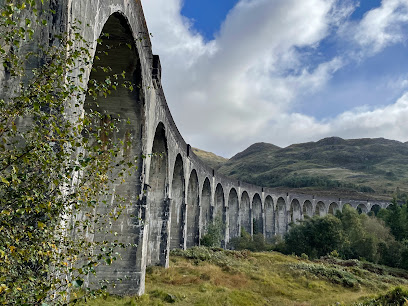
Commando Memorial
Discover the Commando Memorial in the Scottish Highlands, a poignant tribute to bravery surrounded by stunning landscapes and rich history.
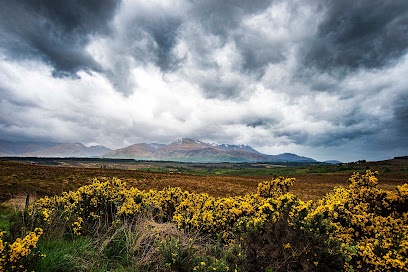
Forth Bridge
Experience the grandeur of the Forth Bridge, a UNESCO World Heritage Site and a stunning feat of Victorian engineering in Scotland.

Fort George
Discover Fort George, an iconic 18th-century fortress near Inverness, rich in history and breathtaking views of the Moray Firth.

Cawdor Castle and Gardens
Discover the enchanting Cawdor Castle and its lush gardens, a historic gem in the Scottish Highlands that captivates with beauty and rich heritage.

Calanais Standing Stones
Discover the mystical Calanais Standing Stones on the Isle of Lewis, a prehistoric marvel steeped in history and natural beauty.

Unmissable attractions to see
National Museum of Scotland
Discover the rich heritage and captivating stories of Scotland at the National Museum of Scotland, a must-visit for every traveler in Edinburgh.
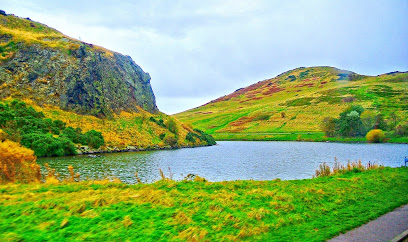
The Kelpies
Experience the breathtaking beauty and cultural significance of The Kelpies, iconic sculptures that celebrate Scotland's equine heritage in Falkirk.

Royal Mile
Experience the rich history and vibrant culture of Edinburgh at the Royal Mile, a must-visit destination for every traveler.

Loch Lomond & The Trossachs National Park
Explore the scenic beauty of Loch Lomond & The Trossachs National Park, a haven for nature lovers and adventure seekers in Scotland.

Culloden Battlefield
Explore Culloden Battlefield, a historical landmark where Scotland's past unfolds amidst stunning Highland landscapes.

Cairngorms National Park
Explore the breathtaking beauty and outdoor adventures of Cairngorms National Park, Scotland's largest national park, perfect for nature lovers and thrill-seekers.
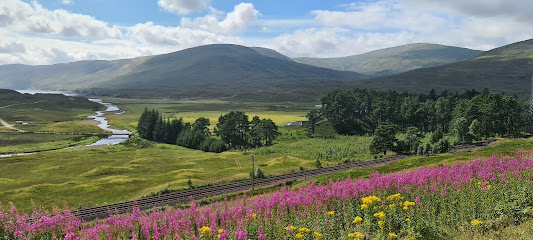
Chanonry Point
Experience the stunning views and dolphin watching at Chanonry Point, a scenic gem in Fortrose, Scotland, perfect for nature enthusiasts and photographers.

Landmark Forest Adventure Park
Experience the thrill of adventure and the beauty of nature at Landmark Forest Adventure Park in the Scottish Highlands.

Fort George
Visit Fort George: A historic fortress offering breathtaking views and rich military heritage in the heart of Scottish Highlands.
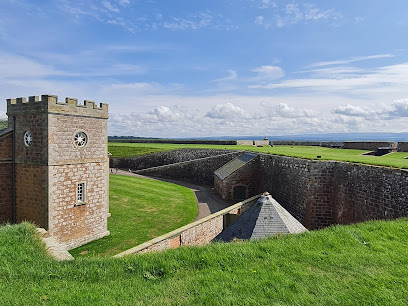
Glenfinnan Monument - National Trust for Scotland
Discover the historic Glenfinnan Monument, a tribute to Jacobite heroes, set amidst stunning Scottish Highlands' landscapes, perfect for nature lovers and history buffs alike.

Cawdor Castle and Gardens
Explore the historic Cawdor Castle and Gardens, a beautiful blend of history and nature in the heart of Scotland.

Loch Tulla Viewpoint
Discover the stunning natural beauty of Loch Tulla Viewpoint, a must-visit destination in the heart of the Scottish Highlands.

Melrose Abbey
Discover the architectural beauty and rich history of Melrose Abbey, a key landmark in Scotland's monastic past, nestled in the charming town of Melrose.

Duncansby Head Lighthouse
Discover the breathtaking cliffs and rich wildlife at Duncansby Head Lighthouse, a must-see destination on Scotland's northeastern coast.

Steall Waterfall
Explore the stunning beauty of Steall Waterfall in Fort William, a must-visit destination for hikers and nature lovers in Scotland's majestic Highlands.

Essential places to dine
The Witchery by the Castle
Experience luxury dining and exquisite accommodations at The Witchery by the Castle in Edinburgh - where history meets culinary artistry.

The Lock Inn
Experience authentic Scottish cuisine at The Lock Inn in Fort Augustus—where delicious food meets stunning canal views.

Fiddlers Highland Restaurant
Experience authentic Scottish cuisine at Fiddlers Highland Restaurant in Drumnadrochit – where every meal tells a story.

Brea - Scottish Restaurant
Experience authentic Scottish cuisine with modern twists at Brea in Stirling - perfect for all dietary preferences.
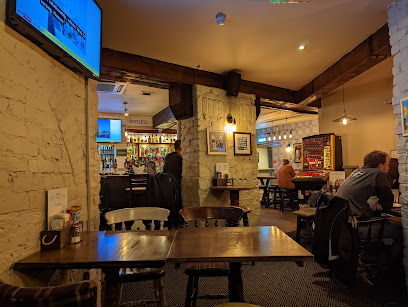
Nevis Range Restaurant
Experience exquisite dining with stunning views at Nevis Range Restaurant in the heart of Scotland's breathtaking Highlands.

The Boathouse Restaurant
Experience exquisite dining with breathtaking views at The Boathouse Restaurant in Fort Augustus near Loch Ness.
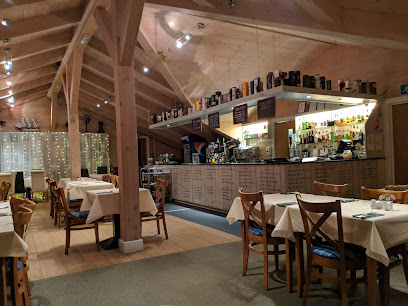
The Laroch Restaurant and Bar
Discover authentic Scottish flavors at The Laroch Restaurant and Bar in Ballachulish—where great food meets breathtaking views.
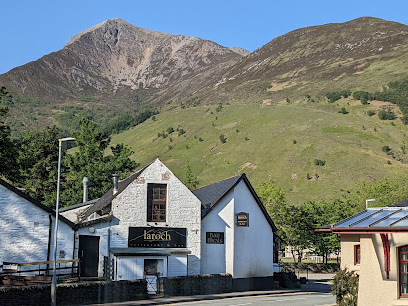
Girvans
Discover the best breakfast experience in Inverness at Girvans - where local flavors meet cozy ambiance.

The Allangrange
Discover The Allangrange: A delightful gastropub in Munlochy offering exquisite dining and warm hospitality amidst stunning Scottish scenery.

The Moorings Restaurant
Discover delightful British cuisine at The Moorings Restaurant in Fort Augustus, where every meal is paired with stunning canal views.

The Highland Soap Company Visitor Centre & Larder Cafe
Discover delightful cuisine amidst breathtaking views at The Highland Soap Company Visitor Centre & Larder Cafe near Fort William.

The Clachan
Experience authentic Scottish cuisine at The Clachan in Dornie - where every meal tells a story amidst stunning Highland views.

Old Station Restaurant
Discover authentic Scottish flavors at Old Station Restaurant in Spean Bridge – where tradition meets taste amidst breathtaking Highland scenery.

North Port Scottish Restaurant
Discover modern British cuisine infused with authentic Scottish flavors at North Port Scottish Restaurant in Perth.

Andersons Restaurant
Experience authentic Scottish cuisine at Andersons Restaurant in Boat of Garten - where fresh ingredients meet warm hospitality.

Markets, malls and hidden boutiques
Moffat Mill
Explore Moffat Mill, a charming Scottish gift shop offering unique souvenirs, clothing, and delicious local treats in the heart of Moffat.

Heritage of Scotland
Discover the essence of Scotland at Heritage of Scotland, your go-to shop for authentic souvenirs, fashion accessories, and traditional kilts in Edinburgh.

The Scotland Shop
Explore authentic Scottish gifts, clothing, and accessories at The Scotland Shop in Edinburgh, a haven for cultural souvenirs.

The Hairy Coo Shop
Discover unique Scottish gifts and souvenirs at The Hairy Coo Shop in Newtonmore, a charming haven for travelers seeking local treasures.

Lothlorien Antique & Collectables Emporium
Explore the enchanting Lothlorien Antique & Collectables Emporium in Moffat for unique treasures and a delightful shopping experience.

Highland Stores
Discover a unique shopping experience at Highland Stores in Dunoon, offering a diverse selection of clothing and accessories for every style.
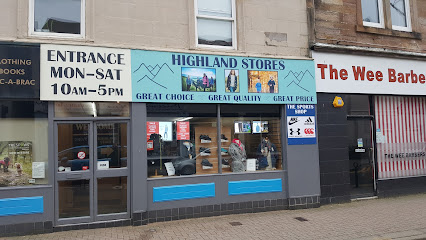
Braw Wee Emporium
Explore Braw Wee Emporium in Glasgow for unique gifts and local crafts that capture the essence of Scottish culture and creativity.

House of Scotland
Discover authentic Scottish gifts in the heart of Edinburgh at the House of Scotland—your ultimate souvenir destination.

Silver & Fern Jewellery
Explore Silver & Fern Jewellery, where exquisite craftsmanship meets unique design in a charming atmosphere perfect for memorable treasures.

Bafoo Shop
Explore Bafoo Shop, a pet lover's paradise offering premium products and expert services for your furry friends.

McRaes of Scotland
Explore McRaes of Scotland in Invergordon for authentic Scottish gifts, unique souvenirs, and a taste of local craftsmanship in a charming setting.

Wildflower Designs
Explore Wildflower Designs in Moffat, where unique gifts and local craftsmanship meet in a charming gift shop experience.

Rhubarb Store
Explore Rhubarb Store for a distinctive shopping experience with a curated selection of fashion and accessories in a vibrant atmosphere.

Enchanted Planet
Explore Enchanted Planet, a unique gift shop offering eco-friendly toys, fashion accessories, and homewares that celebrate creativity and sustainability.

Highland Art Studios
Explore Highland Art Studios in Luss for unique Scottish crafts, local art, and memorable souvenirs that capture the essence of Scotland's culture.

Essential bars & hidden hideouts
Inn On The Loch
Discover the charm of Inn On The Loch, a serene bar and restaurant in Lanark, offering exquisite dining and breathtaking views.

Thistle Street Bar
Discover Edinburgh's vibrant nightlife at Thistle Street Bar - a cozy pub serving exceptional Scottish ales and crafted cocktails.

The Craig Bar
Experience authentic Scottish hospitality at The Craig Bar in Grantown-on-Spey, where local ales and traditional fare await.

The Clachan Inn
Discover the charm of The Clachan Inn in St John's Town of Dalry - a historic pub and inn serving authentic Scottish cuisine in a picturesque setting.

Brodies
Discover Brodies, a cozy bar and restaurant in Moffat, serving delicious local and international cuisine in a welcoming atmosphere.

Bothy Bar
Discover the charm of Scottish cuisine at the Bothy Bar in Kinlochleven, where every meal is a celebration of local flavors and stunning views.

Claymore Bar
Discover the heart of Grantown-on-Spey at Claymore Bar, a cozy pub offering a wide selection of local brews and a welcoming atmosphere for all.

Colebrooke Arms
Discover the quintessential Scottish pub experience at Colebrooke Arms, offering hearty meals and a warm welcome in Crawfordjohn.
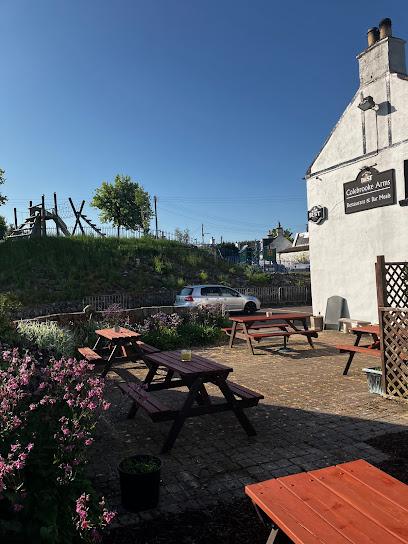
The Last Shift Braehead
Discover the charm of The Last Shift Braehead, where hearty meals and refreshing drinks meet a cozy atmosphere in Lanarkshire.
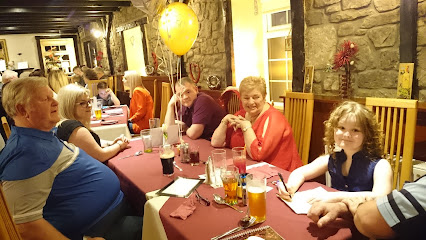
SUIE BAR
Experience authentic Scottish hospitality at Suie Bar in Kincraig, where cozy ambiance meets delightful local brews and friendly service.

The Cross Keys Inn
Experience local charm and delicious Scottish cuisine at The Cross Keys Inn, a welcoming pub in the heart of Douglas, Lanark.

Harris and Ollie's
Experience the warm ambiance and vibrant drink selections at Harris and Ollie's, a charming bar in the heart of Lesmahagow, perfect for relaxation.

Coach House Inn
Experience the warmth of Scottish hospitality at Coach House Inn, a beloved pub in Muirkirk with local brews and hearty meals.

The Caledonian Bar, Gallery Bistro & Late Lounge
Discover The Caledonian Bar, Gallery Bistro & Late Lounge in Carluke: A delightful grill haven perfect for food lovers seeking local flavors and vibrant atmosphere.

Empire Bar
Discover the Empire Bar, a cozy local bar in Muirkirk, offering a delightful selection of drinks and a welcoming atmosphere for tourists.
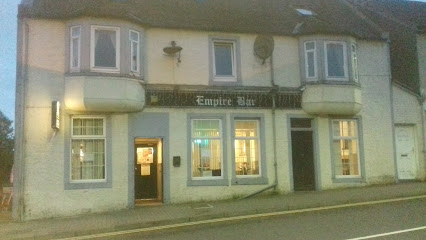
Local Phrases about Scottish Highlands
-
- HelloHullo
[hu-loh] - GoodbyeCheerio
[chee-ree-oh] - YesAye
[aye] - NoNaw
[naw] - Please/You're welcomePlease/Nae bother
[pleez/ney baw-ther] - Thank youThank ye
[thank yee] - Excuse me/SorryExcuse me/Sorry
[ex-kews me/sor-ee] - How are you?How ye daein?
[how yee day-in] - Fine. And you?Fine. And yersel?
[fine. and yer-sel] - Do you speak English?Dae ye speak Scots?
[day yee speak scots] - I don't understandI dinnae ken
[i din-ay ken]
- HelloHullo
-
- I'd like to see the menu, pleaseCan I hae a look at the menu, please
[can a hay a look at the menu, please] - I don't eat meatI dinnae eat meat
[i din-ay eat meat] - Cheers!Slàinte!
[slahn-cha] - I would like to pay, pleaseI'd like tae settle up, please
[i'd like tay settle up, please]
- I'd like to see the menu, pleaseCan I hae a look at the menu, please
-
- Help!Help!
[help] - Go away!Gae awa!
[gay a-wa] - Call the Police!Fone the Polis!
[fone the pol-iss] - Call a doctor!Fone a doctor!
[fone a doc-tor] - I'm lostI'm awa' aff my heid
[im aw-ah aff my head] - I'm illI'm feelin peely-wally
[im feel-in pee-lee wah-lee]
- Help!Help!
-
- I'd like to buy...I'm lookin tae buy...
[im look-in tay buy] - I'm just lookingI'm jist haein a keek
[im jist hay-in a keek] - How much is it?Hoo muckle is it?
[hoo muck-le is it] - That's too expensiveThat's owre dear
[thats ow-er deer] - Can you lower the price?Can ye gie us a bit aff?
[can yee gee us a bit aff]
- I'd like to buy...I'm lookin tae buy...
-
- What time is it?Fit time is it?
[fit time is it] - It's one o'clockIt's yin o'clock
[its yin o-clock] - Half past (10)Half ten
[half ten] - MorningMornin
[mor-nin] - AfternoonEfternuin
[ef-ter-noo-in] - EveningE'enin
[ee-nin] - YesterdayYestreen
[yes-treen] - TodayThe day
[the day] - TomorrowThe morn
[the morn] - 1Yin
[yin] - 2Twa
[twa] - 3Three
[three] - 4Fower
[fow-er] - 5Fife
[fife] - 6Six
[six] - 7Seiven
[siv-en] - 8Echt
[echt] - 9Nyne
[nyne] - 10Ten
[ten]
- What time is it?Fit time is it?
-
- Where's a/the...?Whaur's a/the...?
[wharz a/the] - What's the address?Fit's the address?
[fits the address] - Can you show me (on the map)?Can ye shaw me (on the map)?
[can yee shaw me (on the map)] - When's the next (bus)?Whit time's the next (bus)?
[whit timez the next (bus)] - A ticket (to ....)A ticket (tae ....)
[a ticket (tay)]
- Where's a/the...?Whaur's a/the...?
History of Scottish Highlands
-
The Scottish Highlands were once home to the Picts, a confederation of tribes known for their distinct culture, art, and fortifications. The Picts are famous for their enigmatic stone carvings and standing stones, some of which can still be seen scattered across the Highlands. They played a crucial role in the early history of Scotland until they merged with the Scots in the 9th century.
-
Following the unification of the Picts and Scots, the Kingdom of Alba emerged around the 9th and 10th centuries. This early medieval kingdom laid the foundation for what would eventually become Scotland. Significant battles and power struggles took place during this period, shaping the political landscape of the Highlands.
-
The clan system was a defining feature of the Scottish Highlands, with each clan having its own territory, traditions, and tartans. Clans such as the MacDonalds, Campbells, and MacLeods played major roles in the history of the Highlands. Clan feuds, alliances, and battles were common and have left a lasting legacy on the culture and social structure of the area.
-
The Battle of Culloden, fought on April 16, 1746, was the final confrontation of the Jacobite rising of 1745. The battle saw the forces of Charles Edward Stuart ('Bonnie Prince Charlie') defeated by the British Army led by the Duke of Cumberland. This decisive battle, which took place near Inverness, marked the end of the Jacobite cause and led to significant changes in the Highlands, including the suppression of the clan system and Highland culture.
-
The Highland Clearances were a series of forced evictions that took place during the 18th and 19th centuries. Landowners sought to increase profits by turning arable land into sheep farms, leading to the displacement of thousands of Highlanders. Many were forced to emigrate to the Americas, Australia, and other parts of the British Empire. The Clearances had a profound impact on the population, culture, and landscape of the Highlands.
-
The Victorian era saw a renewed interest in the Scottish Highlands, spurred in part by Queen Victoria's frequent visits to Balmoral Castle. The romanticized view of the Highlands, popularized by literature and art, attracted tourists and adventurers. This period marked the beginning of the Highlands as a tourist destination, a trend that has continued to grow to this day.
-
Today, the Scottish Highlands are known for their stunning landscapes, rich history, and vibrant culture. The region has become a popular destination for outdoor activities such as hiking, skiing, and fishing. Efforts to preserve the Gaelic language and traditional Highland culture are ongoing, ensuring that the unique heritage of the Highlands continues to thrive.
Scottish Highlands Essentials
-
The Scottish Highlands can be accessed through multiple routes. The nearest major airports are Inverness Airport and Glasgow Airport. From London, you can take a direct flight to Inverness, which takes approximately 1.5 hours. Alternatively, you can travel by train; the Caledonian Sleeper offers an overnight journey from London to various Highland destinations. For those preferring to drive, the A9 is the main road connecting the Highlands to the rest of Scotland.
-
Public transportation in the Highlands includes buses and trains, but services can be infrequent, especially in remote areas. Renting a car is highly recommended for flexibility and to explore off-the-beaten-path locations. Local taxis are available in towns, and cycling is also a popular way to get around. For scenic views, consider taking the Jacobite Steam Train from Fort William to Mallaig, famously known as the Hogwarts Express.
-
The official currency is the British Pound Sterling (GBP). Credit and debit cards are widely accepted, but it's advisable to carry some cash for smaller, rural establishments that may not have card facilities. ATMs are available in most towns, but it's wise to withdraw sufficient cash before heading into more remote areas.
-
The Scottish Highlands are generally very safe for tourists. However, basic precautions should be taken. Avoid leaving valuables in your car, especially in remote parking areas. The crime rate is low, but it's always best to stay vigilant. Specific areas with higher tourist traffic, such as Inverness, can attract pickpockets, so keep an eye on your belongings.
-
In case of emergency, dial 999 for police, fire, or medical assistance. Major towns like Inverness have hospitals and medical facilities. It's recommended to have travel insurance that covers medical emergencies. For non-urgent medical issues, local pharmacies can provide over-the-counter medications and advice.
-
Fashion: Do wear layers and waterproof clothing, as the weather can be unpredictable. Avoid overly casual attire when dining at upscale restaurants. Religion: Do show respect in religious sites; some churches may require modest dress and covered heads. Public Transport: Do give up your seat for elderly passengers and avoid loud conversations. Don’t eat or drink on public transport unless allowed. Greetings: Do greet people with a friendly 'hello' or 'hi.' A firm handshake is common in formal settings. Eating & Drinking: Do try local specialties like haggis and whisky. Don’t refuse a drink offered by your host, as it can be considered rude.
-
To experience the Scottish Highlands like a local, visit the smaller villages and interact with residents. Attend local festivals such as the Highland Games for a taste of traditional Scottish culture. Explore the lesser-known trails and lochs to avoid crowds. Don’t miss out on local pubs for an authentic experience of Highland hospitality and storytelling.
Trending Landmarks in Scottish Highlands
-
Edinburgh Castle
-
The Kelpies
-
Urquhart Castle
-
Palace of Holyroodhouse
-
Royal Mile
-
Loch Lomond & The Trossachs National Park
-
Culloden Battlefield
-
Cairngorms National Park
-
Dunrobin Castle & Gardens
-
Glenfinnan Viaduct
-
Commando Memorial
-
Forth Bridge
-
Fort George
-
Cawdor Castle and Gardens
-
Calanais Standing Stones
Nearby Cities to Scottish Highlands
-
Things To Do in Stirling
-
Things To Do in Dundee
-
Things To Do in Glasgow
-
Things To Do in Aberdeen
-
Things To Do in Edinburgh
-
Things To Do in Derry
-
Things To Do in Belfast
-
Things To Do in Newcastle upon Tyne
-
Things To Do in Ramsey
-
Things To Do in Kirk Michael
-
Things To Do in Laxey
-
Things To Do in Peel
-
Things To Do in Durham
-
Things To Do in Onchan
-
Things To Do in Douglas













